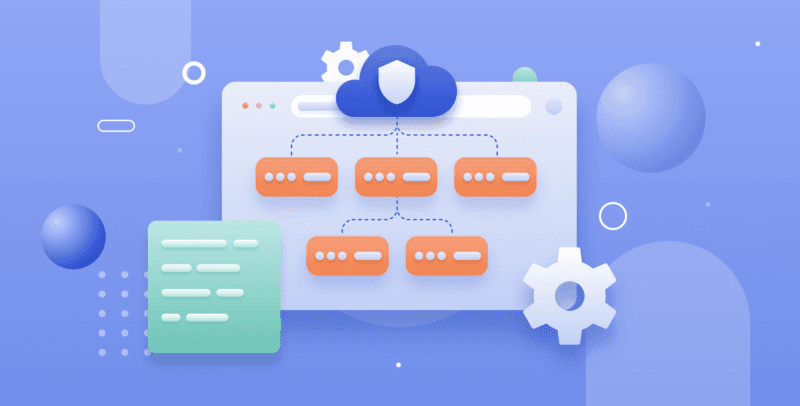
📩 Inbox = Income: 8 Ways to Increase Your Revenue with Solid Email Infrastructure
In the world of SaaS, your email infrastructure is either helping you grow — or quietly leaking revenue.
It’s not just about sending messages. It's about whether those messages actually land, get seen, and drive action. Emails that go to spam, arrive late, or never show up at all cost you users, conversions, and credibility.
If you're serious about growth, here are 8 non-negotiable ways to make your email infrastructure a revenue-generating asset — not a liability.
🚀 1. Warm Up Your Domain Before Sending at Scale
You just configured a shiny new domain. Tempted to blast 50,000 emails right away?
Don't.
ISPs treat sudden bulk sends from new domains as suspicious — throttling or outright blocking them. Instead, gradually increase your volume over time to build a solid sender reputation.
A warm domain = better inbox placement = higher engagement.
💰 Revenue Impact: Better first impressions, more successful onboarding, higher activation rates.
🔐 2. Authenticate Every Email (SPF, DKIM, DMARC)
If you’re not authenticating your emails, inbox providers are guessing who you are — and they don’t trust guesswork.
Set up:
- SPF to authorize sending IPs
- DKIM to prove message integrity
- DMARC to prevent spoofing and phishing
Proper authentication builds trust with inbox providers and keeps your domain from being abused.
💰 Revenue Impact: More inbox placement, fewer lost users due to phishing or bounced onboarding flows.
🌐 3. Use a Dedicated Sending Domain
Don’t send product emails from your root domain. Instead, use a subdomain like mail.yourapp.com.
This isolates your transactional email reputation from your main brand domain, making it easier to manage deliverability and protect your primary domain’s credibility.
💰 Revenue Impact: Higher inbox delivery for key flows like logins, invoices, alerts — and fewer reputational risks.
🧠 4. Track SMTP-Level Failures, Not Just “Sent” Status
Most teams stop at “email sent.” That’s a trap.
Just because your system handed off an email to an SMTP server doesn’t mean it was accepted — or delivered.
Track SMTP responses (e.g. 4xx, 5xx errors), so you know exactly what happened. Log and classify those responses to debug faster.
💰 Revenue Impact: Catch hidden delivery issues early, avoid silent churn, and resolve customer complaints faster.
🔁 5. Handle Soft Bounces Intelligently
Soft bounces aren’t permanent failures — but they’re not green lights either.
Instead of retrying blindly, your infrastructure should:
- Detect bounce patterns
- Apply exponential backoff
- Alert if a mailbox stays unreachable
This keeps you from overloading recipients and getting blocked.
💰 Revenue Impact: Improves domain reputation and keeps mission-critical emails flowing to engaged users.
🔍 6. Add Per-User Message Logging for Debugging & Compliance
Ever had a customer say, “I didn’t get the email”? Without granular logs, you’re guessing.
Your infrastructure should log:
- Email content (template + variables)
- Timestamps
- Delivery status
- Engagement events (if available)
This is also key for GDPR/CCPA audits and enterprise deals.
💰 Revenue Impact: Faster support resolution, stronger compliance, higher trust from customers and enterprise buyers.
📊 7. Make Email Behavior Queryable in Your App
Don’t hide email data in a third-party dashboard.
Your product team should be able to query:
- What emails were sent to a user
- If they opened/clicked
- If there was a bounce or complaint
This enables in-app visibility, support tooling, and event-driven product logic.
💰 Revenue Impact: Smarter re-engagement flows, fewer support tickets, better user experience = higher retention.
🔕 8. Simplify Unsubscribe & Preferences
Hiding unsubscribe links or ignoring user preferences may feel clever — but it kills your deliverability over time.
Build clear, accessible:
- Unsubscribe links
- Email preference centers
- One-click opt-outs for certain categories
It’s not about sending more — it’s about sending what users want.
💰 Revenue Impact: Fewer complaints, cleaner lists, longer user lifetime value (LTV).
✅ Final Thoughts: Revenue Starts With Reliability
When your product emails fail, users feel it. They don’t blame the inbox — they blame you.
The fastest-growing SaaS companies treat email like infrastructure: reliable, observable, and built for scale. With tools like isend.ai, setting this up isn’t just easier — it’s built-in.
If your inbox game is weak, your revenue is leaking.
Inbox = Income. Now make yours work like it.
Want this post as a downloadable checklist or slide deck for your team? Let us know — we’re happy to help.